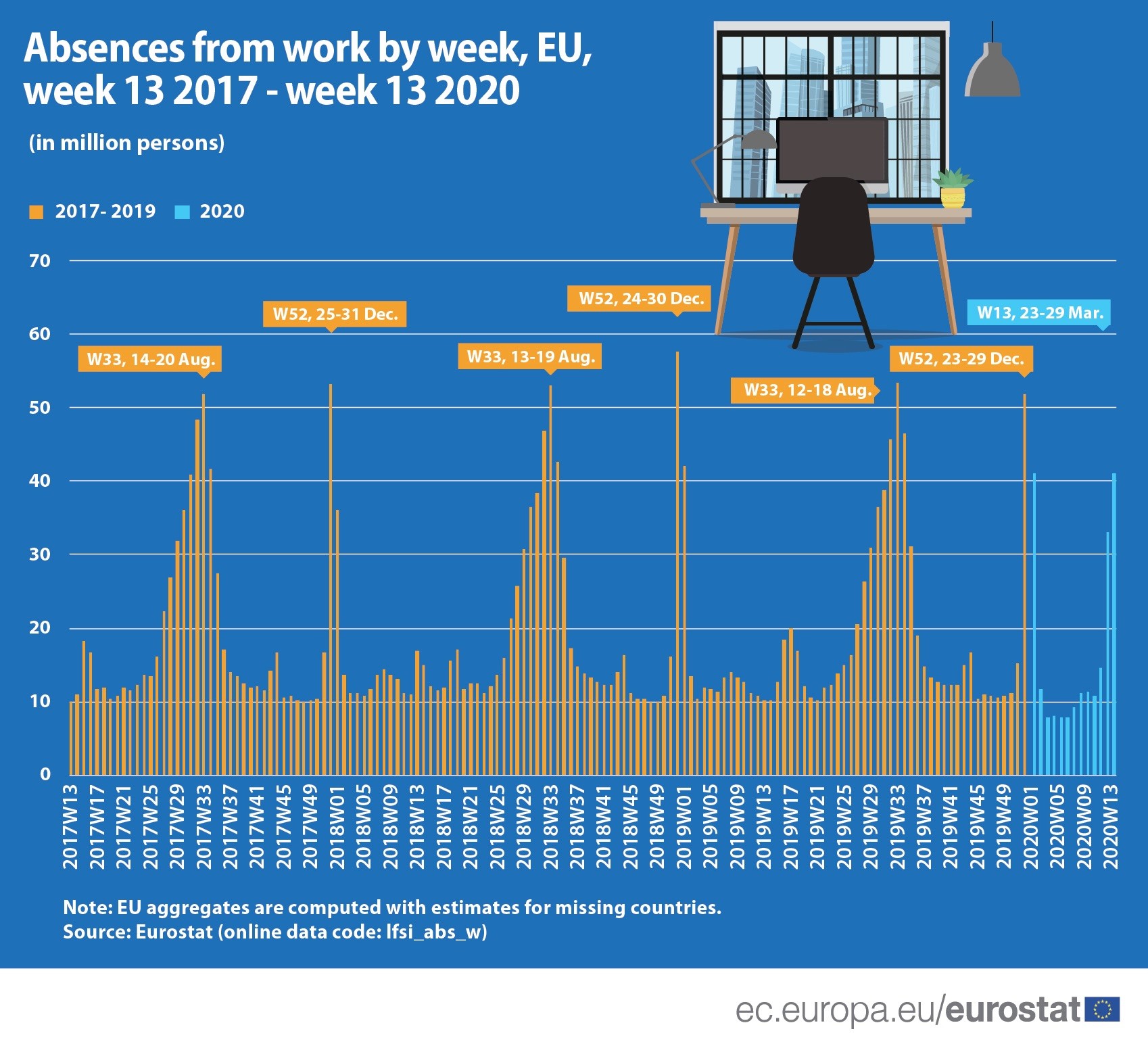Weekly absences from work rose between the first and second week of March 2020 (weeks 10 and 11), due to initial government measures against the spread of COVID-19. The number of absences increased more sharply in subsequent weeks as a consequence of continued measures against the spread of the COVID-19 pandemic.
The number of employed people who were temporarily absent from work was four times higher at the end of March (week 13) compared with the beginning of that month (weekly absences rose from 10.8 million in week 10 to 41.2 million in week 13). Compared with the previous year, the number of absences in the last week of March 2020 was close to the seasonal peaks seen in mid-August and late December (where 53.4 million and 51.9 million people respectively were absent from work in 2019).
Throughout 2017 to 2019, temporary absences from work have peaked in mid-August and late December every year. The data - which measure the number of employed persons who are temporarily absent from work during reference weeks - showed that temporary absences peaked in week 33 and 52 during 2017-19.
Source dataset: lfsi_abs_w
For more information, take a look at the Statistics Explained article Weekly absences from work.
Note: The European Union (EU) includes 27 EU Member States. The United Kingdom left the European Union on 31 January 2020. Further information is published here.
To contact us, please visit our User Support page.
For press queries, please contact our Media Support.


